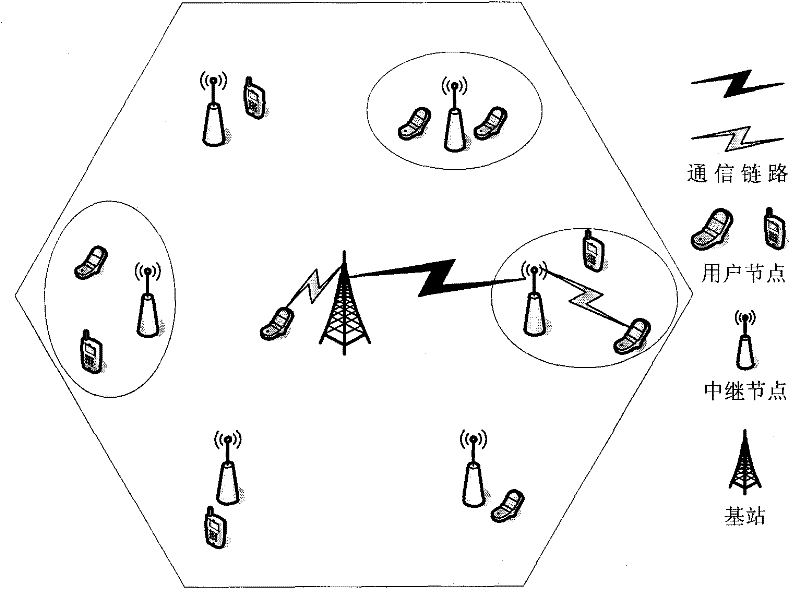Orthogonal frequency division multiple access relay system resource allocation method based on game theory
A technology of orthogonal frequency division multiple access and relay system, which is applied in the field of distributed dynamic resource allocation and can solve problems such as difficult modeling
- Summary
- Abstract
- Description
- Claims
- Application Information
AI Technical Summary
Problems solved by technology
Method used
Image
Examples
Embodiment Construction
[0042] Step 1: In a single-cell OFDMA relay system, including a base station d with N subcarriers, M r fixed relay node r 1 , r 2 ,...,r j ,..., Form a fixed set of relay nodes Among them, M r is a positive integer, used to represent the number of fixed relay nodes in the system, j is [1, M r ] any positive integer in the range, and each fixed relay node r j With N subcarriers, the single-cell OFDMA relay system also includes randomly distributed M s user node s 1 ,s 2 ,...,s i ,..., Form user node set Among them, M s is a positive integer, used to represent the number of user nodes owned by the system, i is [1, M s ] any positive integer in the range, and each user node s i With N subcarriers, each user node s i The maximum transmission power of N is a positive integer;
[0043] Step 2: user node s i to all fixed relay nodes r j and base station d to broadcast information, each fixed relay node and base station decodes it respectively, and judges wheth...
PUM
 Login to View More
Login to View More Abstract
Description
Claims
Application Information
 Login to View More
Login to View More - R&D
- Intellectual Property
- Life Sciences
- Materials
- Tech Scout
- Unparalleled Data Quality
- Higher Quality Content
- 60% Fewer Hallucinations
Browse by: Latest US Patents, China's latest patents, Technical Efficacy Thesaurus, Application Domain, Technology Topic, Popular Technical Reports.
© 2025 PatSnap. All rights reserved.Legal|Privacy policy|Modern Slavery Act Transparency Statement|Sitemap|About US| Contact US: help@patsnap.com



